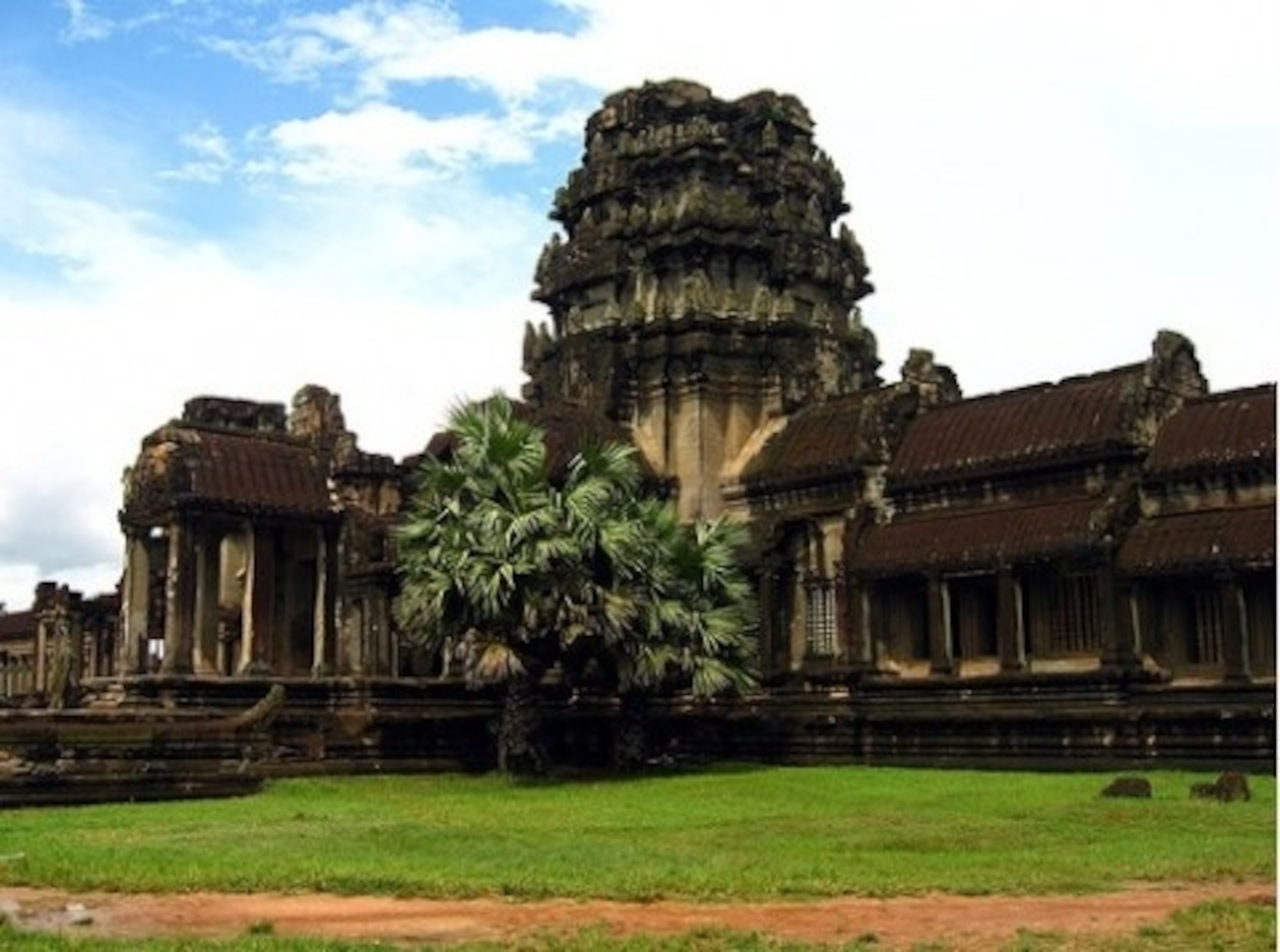
Museum Brings Buddhas and Criticism to Angkor
Anyone who has traveled to Angkor Wat (pictured, above) knows that there’s something missing from the ninth-century Buddhist temple—Buddhas. While the UNESCO complex, which includes Angkor Wat and the Bayon Temple, is no doubt an archaeological wonder, tourists complain the site lacks artifacts. Throughout the centuries, artifacts were taken from Angkor—the once-capital city—by the French (Cambodia’s former ruler) and displayed in museums overseas. Eventually some of the artifacts returned to Southeast Asia, but they are located in Cambodia’s National Museum, over 185 miles south in Phnom Penh.
Last October, a Thai company tried to bring artifacts back to the temple, by opening the Angkor National Museum just a few miles from the Angkor Archaeological Park. The $15-million museum borrows Angkor artifacts (including some 1,000 Buddhas) from the National Museum, as well as others. A good solution? Not everyone thinks so. Many believe that Thailand, once a ruler of Cambodia, has bigger plans than just opening the museum. Others complain about the museum’s history and aesthetics—it has hundreds of Buddhas that date back no further than the 20th century, and it’s designed by a Bangkok-based company (Vilailuck International Holdings), and includes a large retail area.
The New York Times explains:
Under the terms of its contract with the Cambodian government, the company agreed to transfer control of the museum to the government after 30 years in exchange for the right to display treasures from the National Museum and from the Conservation d’Angkor, a national trove of some 6,000 artifacts. That collection includes important statues of Buddha from several historical periods. “We want to educate Cambodian people about their own history,” said the museum’s managing director, Sunaree Wongpiyabovorn. There are those “who know little about its monuments, and even less of the progress of Buddhism and what led up to it,” she added.
While many critics argue the museum is only looking to turn an archaeological treasure into pure profit, Wongpiyabovorn said the museum does not expect to make any profit for at least ten years, the Times reported.
The Thais are frustrated with the harsh criticism over the museum, noting that:
Under the original plan, the former director of the National Museum, Khun Samen, agreed to hand over as many as 1,000 artifacts during the 30-year contract, as well as 31 major pieces for a six-month loan. His successor, Hab Touch, reduced the number of major pieces to be shared to 23. “I am not going to surrender important pieces that should be permanently displayed here for the integrity of the collection,” he said.
And although UNESCO provides support and advice on how to run the museum, Angkor receives criticism there, too. When it opened—behind schedule—many of the artifacts were not labeled. Although, as the Times notes, this is not entirely the museum’s fault. Much of the Conservation d’Angkor’s documentation of the pieces was destroyed during the Pol Pot regime.
Do you think new museum hurts or helps the integrity and authenticity of Angkor Wat? Let us know in the comments below.
- National Geographic Expeditions
Photo: Kevin ‘Elvis’ King